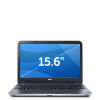Dell Inspiron M531R 5535 Me and My Dell - Page 60
USB, USB Ports, Side-surround sound port, RCA S/PDIF port, Plug-and-Play, Hot swapping, Standard USB
 |
View all Dell Inspiron M531R 5535 manuals
Add to My Manuals
Save this manual to your list of manuals |
Page 60 highlights
Side-surround sound port - Connect left/right speakers. RCA S/PDIF port - Transmits digital audio without the need of analog audio conversion. Optical S/PDIF port - Transmits digital audio, using optical signals, without the need of analog audio conversion. USB Universal Serial Bus (USB) allows you to connect peripherals to a computer or a tablet. These peripherals include mouse, keyboard, printer, external drives, cameras, phones, and so on. USB port may be used to transfer data between your computer and the device and also to charge supported devices. For more information, see the documentation for your device. Some computers also have USB ports with integrated PowerShare feature that allows you to charge your USB devices even when the computer in turned off. USB also supports Plug-and-Play and hot swapping. Plug‑and‑Play - Allows your computer to recognize and configure a device automatically. Hot swapping - Allows you to remove and connect USB devices without restarting your computer. USB Ports Standard USB - The standard USB port is present on most laptops and desktops. Most USB devices connect to the computer using this port. Mini‑USB - A mini‑USB port is used in small electronic devices such as cameras, external storage drives, tablets, and so on. Micro‑USB - A micro-USB port is smaller than mini-USB port and is used in phones, tablets, wireless headphones, and other small electronic devices. Powered USB- A powered USB uses a more complex connector than a standard USB. It essentially has two connectors in a single cable, one for standard USB plug and the other for power, thus allowing higher-power devices to be connected without the use of an independent power supply. It is used in retail equipments such as barcode reader and receipt printers. 60 Audio















